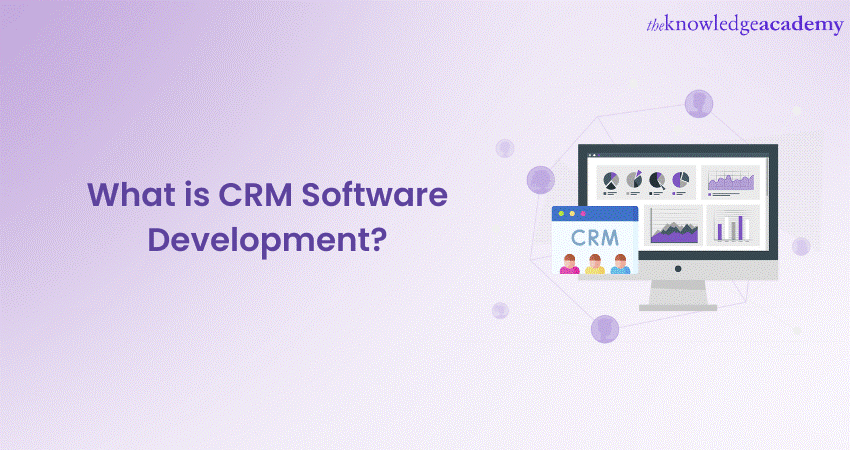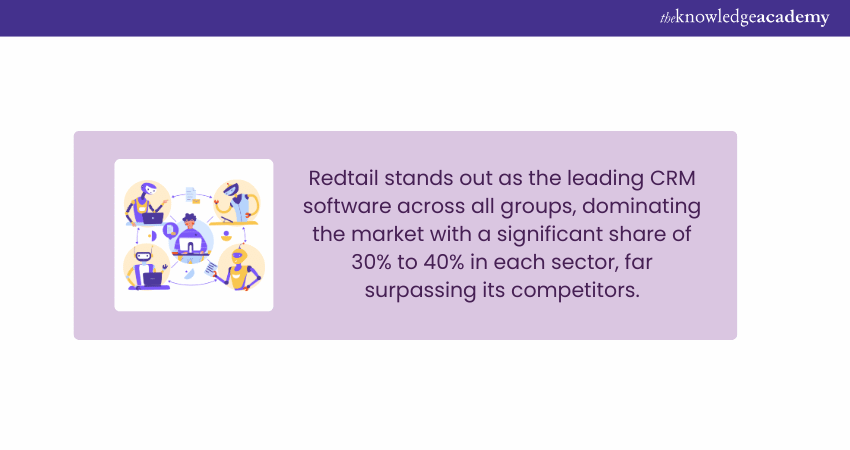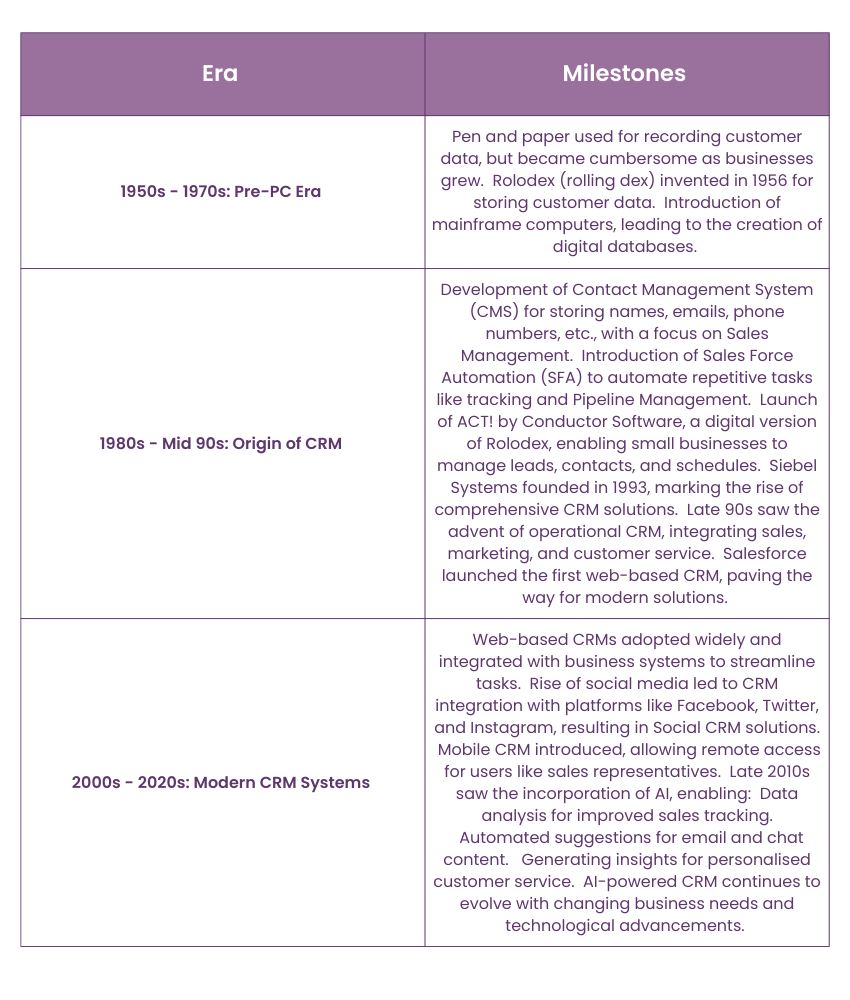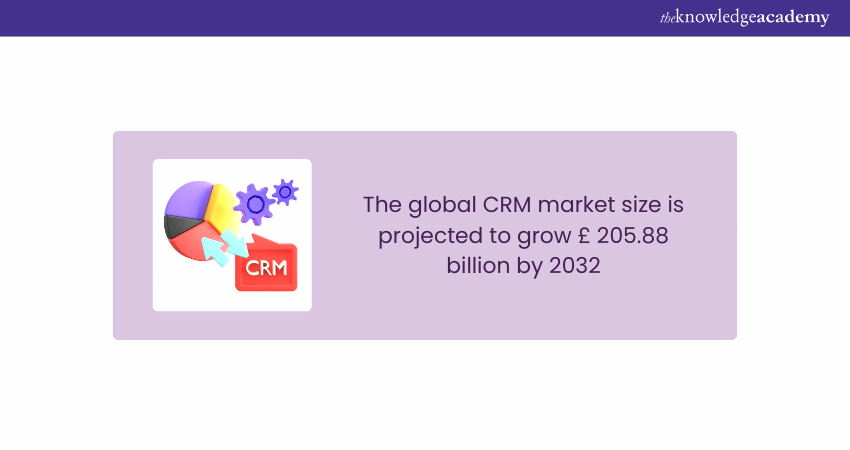We may not have the course you’re looking for. If you enquire or give us a call on +61 272026926 and speak to our training experts, we may still be able to help with your training requirements.
We ensure quality, budget-alignment, and timely delivery by our expert instructors.

Every business dreams of a world where each customer interaction feels personal, every sale seamless, and every relationship stronger than ever. This is what Customer Relationship Management (CRM) systems enable. It's like having a digital partner who streamlines sales, strengthens support, and personalises every customer journey. But with such innovation comes the need for an in-depth understanding of What is CRM Software Development. This blog uncovers the power behind CRM Software Development, exploring its role in shaping unforgettable customer experiences and driving business success. So read on and master the digital art of customer satisfaction!
Table of Contents
1) What is CRM Software Development?
2) Understanding the CRM Software Development Process
a) Requirement Analysis
b) Design and Architecture
c) Development and Coding
d) Testing and quality Assurance
e) Deployment and Implementation
f) Maintenance and Support
3) Different Types of CRM Software
4) Key Features of CRM Software
5) Benefits of CRM Software for Businesses
6) What is the Most Popular CRM Software?
7) Does CRM Require Coding?
8) Conclusion
What is CRM Software Development?
CRM Software allows businesses to centralise customer data, including purchase history, contact details, preferences, and communication history. This helps businesses gain a comprehensive view into each customer and enables personalised interactions and targeted marketing campaigns.
To obtain these capabilities, you must be involved in CRM development, a process intended to create a software system that enables business owners to monitor and oversee communication and interactions with existing clients and prospective leads.
Understanding CRM Software Development Process
CRM Software Development includes a range of features designed to streamline customer interactions, sales processes, and Data Management. From small enterprises to large corporations, CRM Software serves as a digital hub that centralises customer information, sales data, communication history, and more.
The CRM Software Development process requires rigorous planning, skilled craftsmanship, and high dedication. Each stage contributes to the creation of a solution that equips businesses with the skill to manage customer relationships with efficiency, leveraging key components of CRM. Let’s discuss some of the key steps to understand the CRM Software Development process and its applications in businesses.
1) Requirement Analysis
The first step to understanding CRM and its use case in a business is to have a thorough requirement analysis. This stage involves engaging professionals to understand the specific needs, objectives, and goals that the CRM Software will cater to. Answering these questions will enable the developers to gain insights into the challenges and opportunities associated with the desired CRM system. This blueprint, constructed through collaborative discussions, serves as the foundation for the entire development process.
The requirement analysis phase not only lays the groundwork for successful software creation but also fosters effective communication between developers and stakeholders, ensuring a collaborative and result-driven approach. By delving into the heart of the organisation's needs, requirement analysis ensures that the CRM Software becomes a tailored tool that enhances Customer Relationship Management and business operations.
Learn how to enable CRM analytics with our comprehensive Salesforce CRM Training – Sign up now!
2) Design and Architecture
After having a clear understanding of the requirements, the next phase is where developers draw a digital blueprint detailing the CRM's structure, user interface (UI), and functionality. The design captures the essence of user experience (UX), ensuring that interactions are intuitive and visually appealing.
On the other hand, the architectural blueprint is equally vital, outlining the technological foundation that supports the CRM's operations. This includes database structures, integration points, and data flow. By diligently crafting design and architecture, developers ensure the CRM's scalability, responsiveness, and adaptability.
3) Development and Coding
In the development and coding phase of CRM Software Development, the blueprints evolve into a dynamic and functional reality. Skilled developers use their expertise to transform visual and conceptual elements into lines of code that drive the software's capabilities.
In this process, the CRM's features, functionalities, and interactions are crafted with care and efficiency. Each piece of code serves as a building block contributing to the CRM's performance and user experience. The development process encompasses coding user interfaces, integrating databases, creating algorithms, and establishing the logic that governs the CRM's operations.
This phase also involves debugging, optimising, and refining the code to eliminate any inconsistencies or errors. It's a delicate balance between creativity and technical precision, where every code snippet contributes to the CRM's overall excellence.

4) Testing and Quality Assurance
The testing and quality assurance phase serves as a critical bridge between development and deployment, fortifying the CRM Software's ability to deliver a seamless, secure, and user-centric experience. It establishes the foundation for a solution that empowers businesses to effectively manage customer relationships, enhance operational efficiency, and drive growth.
During the testing phase, the CRM Software is subjected to a variety of examinations to identify any glitches, bugs, or discrepancies. Functionality, user interactions, and data flow are rigorously evaluated to guarantee optimal performance. Quality assurance protocols validate that the CRM meets predefined standards, ensuring that it aligns with user expectations.
In this process, vulnerabilities are identified and addressed, which ensures the safeguarding of sensitive data from potential breaches. This phase ensures fine-tuning, refining, and enhancing the CRM Software to create a polished and reliable end product
5) Deployment and Implementation
In this step, the CRM is introduced to implementation and operations. The deployment and implementation stage plays a pivotal role, which involves carefully orchestrating CRM’s introduction and seamless integration with the existing workflows.
Deployment involves launching the CRM onto the chosen environment, whether it's on-premises servers or cloud-based platforms. This phase demands effective planning to ensure a smooth transition, minimising disruptions to business operations. It is important to integrate CRM with the existing system, allowing the CRM Software to seamlessly collaborate with other tools and processes.
Implementation, on the other hand, focuses on the practical rollout of the CRM Software to end-users. Training sessions may be conducted to familiarise employees with the software's functionalities and interface. User adoption is the main consideration, and support mechanisms are established to address the challenges that may arise during initial stages of usage.
6) Maintenance and Support
This is a vital phase to run the CRM successfully and ensure its ongoing efficacy. It's a continuous effort to uphold the CRM's value proposition, enabling businesses to reap the Benefits of Customer Relationship Management while ensuring a reliable and user-friendly experience.
Maintenance includes monitoring the CRM's performance, promptly addressing any emerging issues, and providing updates to keep it aligned with evolving needs and technological advancements. This ensures that the CRM remains resilient, secure, and up-to-date.
Support mechanisms are established to assist users in navigating the software effectively. Help desks, user guides, and troubleshooting resources are provided to address queries and challenges that users might encounter. This user-centric approach promotes a positive experience and encourages the seamless utilisation of CRM Software.
This is a vital phase to run the CRM successfully and ensure its ongoing efficacy. It's a continuous effort to uphold the CRM's value proposition, enabling businesses to reap the benefits of effective customer relationship management while ensuring a reliable and user-friendly experience.

Learn how to launch HubSpot CRM and more by registering for our HubSpot CRM Training!
Different Types of CRM Software
There are three significant types of CRM Software systems:
1) Collaborative CRM System: This system helps organisations share client data across multiple departments. Collaborative CRM Software provides a more comprehensive view of customers.
2) Analytical CRM System: Analytical CRM systems assist organisations in better decision-making by presenting insights into client behaviour. Additionally, these systems help understand trends and patterns to expand marketing strategies.
3) Operational CRM System: These systems benefit organizations by helping them manage and integrate business processes. Becoming a CRM Developer allows professionals to build and optimize these systems, enabling employees to access client data from any location and providing real-time visibility into multiple business areas.
Key Features of CRM Software
CRM Software offers plenty of features that help businesses in sales, management, decision-making and more. Some of the key features of CRM are as follows:
a) Contact Management: The CRM stores and manages customer information, including contact details, interactions, and preferences, in a centralised database.
b) Sales Automation: It is an efficient software that automates sales processes, ranging from lead generation to deal closure, by tracking leads, managing pipelines, and sending automated follow-up emails to the targets.
c) Customer Interaction Tracking: The CRM Software records and tracks customer interactions across various channels, including emails, calls, and social media, to maintain a comprehensive communication history.
d) Analytics and Reporting: CRM is widely used to provide detailed reports and insights on sales performance, customer behaviour, and overall CRM usage to inform decision-making.
e) Lead Management: You can organise and manage leads across all the stages of the sales funnel, enabling sales teams to prioritise and nurture prospects effectively via CRM.
f) Workflow Automation: CRM Software is efficiently used to automate routine processes and tasks, reducing manual effort and ensuring consistent execution.
Register for our CRM Training and unlock your business potential!
Benefits of CRM Software for Businesses
If you keep asking yourself – what is CRM? And how useful is it for your business? Well, here we have discussed some of the key benefits of CRM in business. This will help you understand why it is so important for businesses to have CRM integrated into their systems.

a) Forecasting and Planning: CRM Software provides tools for sales forecasting, enabling businesses to better predict demand and plan for future growth.
b) Centralised Communication: CRM Software enables businesses to manage customer communications across various channels, ensuring consistent and coherent messaging.
c) Data Security: CRM offers data encryption, access controls, and timely backups to ensure the security and integrity of sensitive customer information.
d) Customer retention: CRM helps in identifying customer needs and providing personalised experiences. CRM Software helps businesses retain loyal customers and reduce churn rates.
e) Scalability: CRM Software can grow with the business, accommodating increased customer data and expanding functionalities as the organisation expands.
f) Competitive Advantage: Utilising CRM gives businesses an edge in leveraging market trends and customer preferences, helping them stay ahead of the competition.
What is the Most Popular CRM Software?
The three most popular CRM software are:
1) HubSpot CRM (Best CRM Software)
2) Salesforce (Best for sales teams)
3) Microsoft Dynamics 365 (Top CRM Platform for Business Intelligence)
Does CRM Require Coding?
No, CRM systems can be used without coding, as many of these platforms are designed to be user-friendly and enable configuration through graphical interfaces.
Conclusion
In conclusion, CRM Software forms the backbone of modern business success, turning customer interactions into meaningful relationships. Streamlining processes, increasing engagement, and personalising experiences with CRM, as discussed in CRM Interview Questions, empower businesses to thrive in competitive markets. Whether you're aiming solely for bigger profits or deepening customer loyalty, understanding What is CRM Software Development is essential.
Learn about the various aspects of Software Development with our Software Development Lifecycle Training – Sign up now!
Frequently Asked Questions
What is CRM in Software Development?

CRM stands for Customer Relationship Management in software development. It refers to the practices, and technologies organisations use to analyse customer interactions and data throughout the customer lifecycle.
What Does a CRM Developer do?

A CRM developer designs and implements CRM Software solutions to help organisations manage customer data, improve interactions, and streamline processes.
What are the Other Resources and Offers Provided by The Knowledge Academy?

The Knowledge Academy takes global learning to new heights, offering over 3,000 online courses across 490+ locations in 190+ countries. This expansive reach ensures accessibility and convenience for learners worldwide.
Alongside our diverse Online Course Catalogue, encompassing 19 major categories, we go the extra mile by providing a plethora of free educational Online Resources like News updates, Blogs, videos, webinars, and interview questions. Tailoring learning experiences further, professionals can maximise value with customisable Course Bundles of TKA.
What is The Knowledge Pass, and How Does it Work?

The Knowledge Academy’s Knowledge Pass, a prepaid voucher, adds another layer of flexibility, allowing course bookings over a 12-month period. Join us on a journey where education knows no bounds.
What are the Related Courses and Blogs Provided by The Knowledge Academy?

The Knowledge Academy offers various Software Engineering Courses, including the Systems Modelling Techniques Course and the Systems Engineering Training Course. These courses cater to different skill levels, providing comprehensive insights into Software Architecture vs Design.
Our Programming & DevOps Blogs cover a range of topics related to Software Development, offering valuable resources, best practices, and industry insights. Whether you are a beginner or looking to advance your Software Deveopment skills, The Knowledge Academy's diverse courses and informative blogs have got you covered.
Upcoming Programming & DevOps Resources Batches & Dates
Date
 Systems Engineering Training
Systems Engineering Training
Fri 28th Mar 2025
Fri 23rd May 2025
Fri 4th Jul 2025
Fri 5th Sep 2025
Fri 24th Oct 2025






 Top Rated Course
Top Rated Course



 If you wish to make any changes to your course, please
If you wish to make any changes to your course, please


